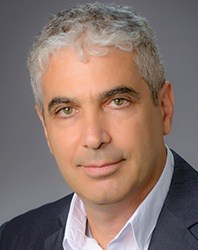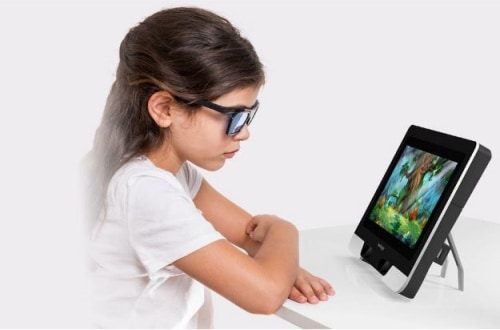Israel-based start-up NovaSight has started clinical trial for lazy eye treatment in Shanghai using its CureSight system, a medical device that uses optimal image sensors to track eye movements.
The study is hoped to pave the way for the company’s overseas expansion, banking on its cloud-based digital treatment of the medical condition that afflicts three of 100 children in the population.

“The study, which includes two sites in Shanghai, is led by Dr. Rui Liu from the Eye & ENT Hospital of Fudan University, one of the mainland's top hospitals, and will involve 20 patients in the CureSight treatment group and 20 in the patching control group,” said Ran Yam, CEO, NovaSight.
He added: “This marks another milestone for NovaSight and the beginning of our journey to secure the mainland National Medical Products Administration clearance in preparation for our future commercial activities in the mainland.”
Yam said the results of the Shanghai study would be released by the end of 2022.
A similar clinical trial was conducted last year in six medical centres in Israel, including Sheba Medical Center, which was ranked one of the top 10 best hospitals in the world.
The study, which randomly assigned 103 patients from the ages of 4 to 9, compared the improvement in visual outcomes achieved by CureSight digital treatment versus eye patching, considered the current gold-standard-of-care treatment.
In addition to achieving the non-inferiority primary endpoint, NovaSight noted that the topline analyses from the pivotal study demonstrated that best corrected visual acuity (BCVA) improvement at week 16 was larger in the treatment group compared to the patching control group.
The study also evaluated adherence and patient satisfaction, noting a mean adherence of 93% among clinical subjects in using the CureSight eye tracking system, with 93% of parents saying that they are likely or very likely to choose the CureSight digital treatment over patching.
“Eye patching is effective when patients are compliant, however, patching is often associated with insufficient adherence due to the discomfort it brings to the patient and the social stigma that many children experience when wearing a patch," Yam said.
Cloud-based digital device
The CureSight system consists of a digital screen device and a red-blue treatment glasses that trains brain to use both eyes simultaneously, while the user watches any streamed video content through red-blue treatment glasses.
Optical image sensors track and record momentary gaze position, sampling 90 times a second to create objective and comprehensive eye movement patterns.
Using sophisticated AI algorithms and eye-tracking technology, CureSight blurs the centre of vision of the image that is shown to the strong eye using real-time image processing.
This encourages the brain to complete the image fine details from the amblyopic eye image and trains the two eyes to work as a team. The device is designed to be used at home, and it shares treatment reports with caregivers via a cloud portal.
By tracking the patient eye movement, the AI algorithms receive the data which allows for unique insights into human behaviour and facilitates natural user interfaces.
All collected data is uploaded to the cloud and is processed in real-time for immediate analysis of the results to help in the assessment and decision of treatment. The eye care provider receives a comprehensive patient vision summary. Progress reports and real-time monitoring of the child's treatment are easily accessible.
Using digital technology to diagnose vision problems
Meanwhile, NovaSight plans to introduce its EyeSwiftPRO system, another device which helps diagnose conditions such as myopia by tracking patients’ eye movements as they watch animated videos on a screen.
“Traditional vision exams such as the eye chart, undergone by hundreds of millions of patients worldwide every year, are manual, subjective, time-consuming, limited and often inaccurate – especially for toddlers who can’t always understand the examiner’s instructions or communicate what they’re seeing,” said Yam. “Therefore, they are not sufficiently effective to detect many visual impairments, including amblyopia (lazy eye). As a result, these conditions often go undetected or are misdiagnosed.
Suitable for both children and adults, EyeSwiftPRO is designed to replace the traditional eye chart and other manual exams and deliver any trained eye-care provider various fields of diagnostic tools by using dedicated protocols such as myopia, amblyopia, binocular vision and more.



